Navratri Colors 2025: The Nine Days, Nine Hues of Celebration
Navratri, the vibrant nine-night festival dedicated to Goddess Durga, is a time of devotion, energy, and exuberant celebration. Each day of Navratri holds a unique spiritual significance, symbolized by specific colors that devotees traditionally wear. These colors are not just about aesthetics—they are believed to invoke divine energy, positivity, and strength. For 2025, understanding the Navratri colors can help you align your outfit choices with tradition, while also adding a touch of modern style.
Day 1: Pratipada Orange – Energy and Enthusiasm
Navratri begins with the vibrant shade of orange, a color that radiates warmth, positivity, and new beginnings. Orange symbolizes energy, creativity, and determination—qualities that devotees invoke while worshipping Goddess Shailaputri, the first form of Durga.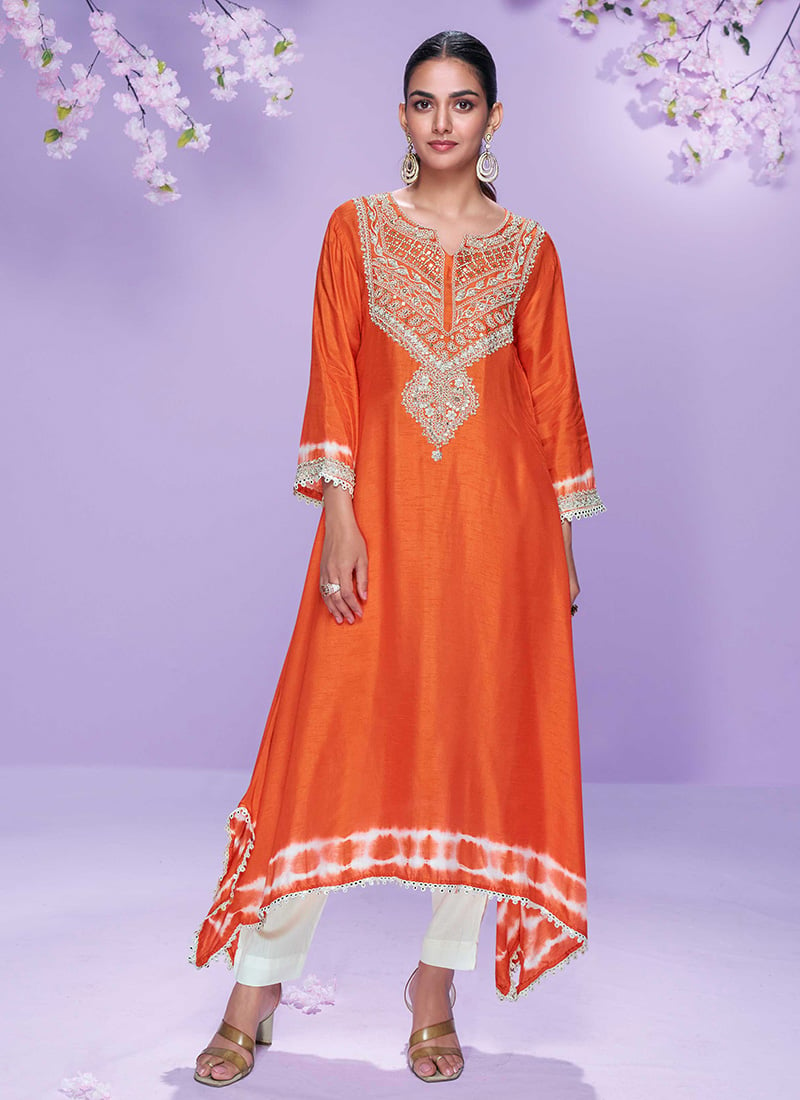
On this day, people often wear orange attire, decorate their homes with marigold flowers, and light lamps that glow like the morning sun. The color inspires a sense of zeal, reminding everyone that Navratri is not just about rituals but also about embracing life with vigor and optimism.
Day 2: Dwitiya White – Purity, Peace, and Serenity
The second day is dedicated to White, a universal symbol of purity and peace. On this day, devotees honor Goddess Brahmacharini, who represents calmness, wisdom, and devotion. White helps one cultivate inner peace and clarity.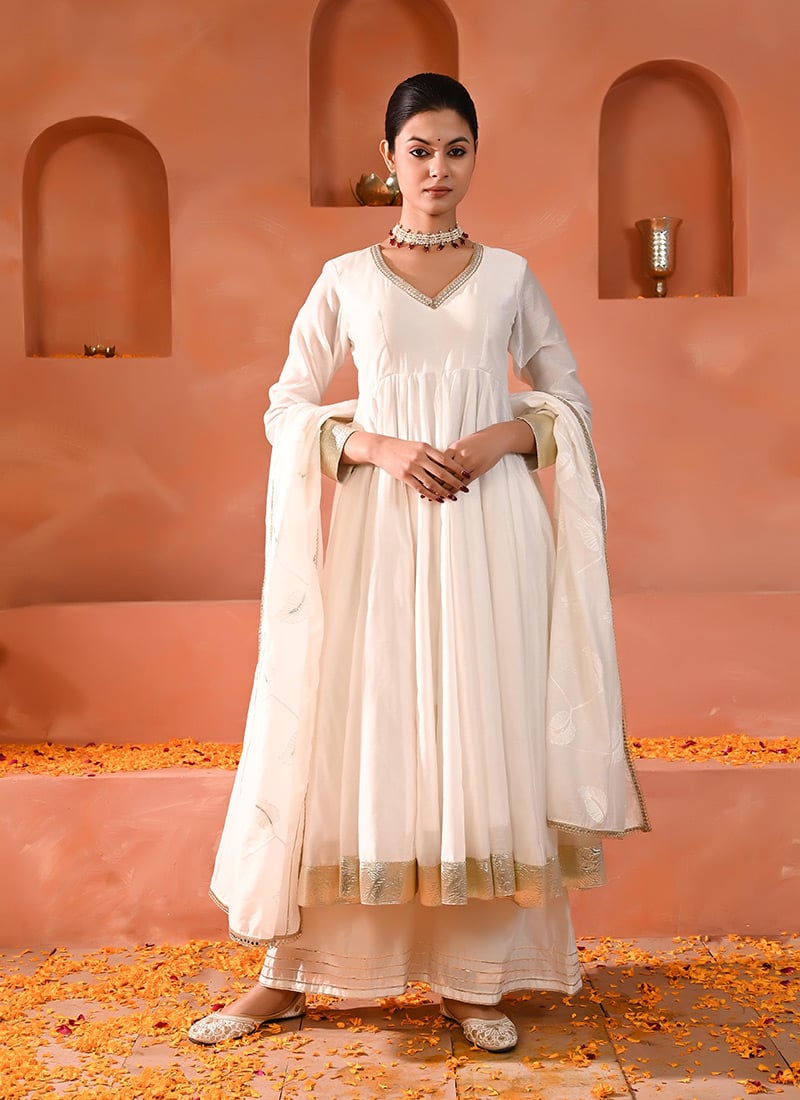
Dressing in white during this day is thought to enhance concentration and focus during prayers. Many devotees also offer jasmine flowers, white sweets, or milk-based offerings to the goddess, strengthening the association with calmness and spiritual elevation.
Day 3: Tritiya Red – Passion, Strength, and Devotion
Red is the color of passion, power, and strength, and it dominates the third day of Navratri. This day is devoted to Goddess Chandraghanta, known for her bravery and warrior spirit.
Wearing red reflects the devotee’s readiness to face challenges with courage and determination. It is also linked with deep devotion and love for the divine. Red bangles, bindis, or dupattas are especially popular choices. Offering red hibiscus flowers or sweets colored with saffron or beetroot enhances the rituals
Day 4: Chaturthi Royal Blue – Divine Energy and Stability
The fourth day is colored in Royal Blue, symbolizing divine power, stability, and depth. This shade reflects trust, wisdom, and the immense cosmic energy of the goddess. Devotees worship Goddess Kushmanda on this day, who is believed to create the universe with her radiant smile. 
Wearing royal blue resonates with inner stability and confidence. Decorate your altar with blue cloth or candles, and use offerings like lotus flowers or seasonal fruits to align with the goddess’s blessings of strength and prosperity.
Day 5: Panchami Yellow – Positivity, Knowledge, and Joy
On the fifth day, the festival embraces Yellow, a color associated with brightness, optimism, and learning. This day is dedicated to Goddess Skandamata, the motherly form who nurtures and protects. 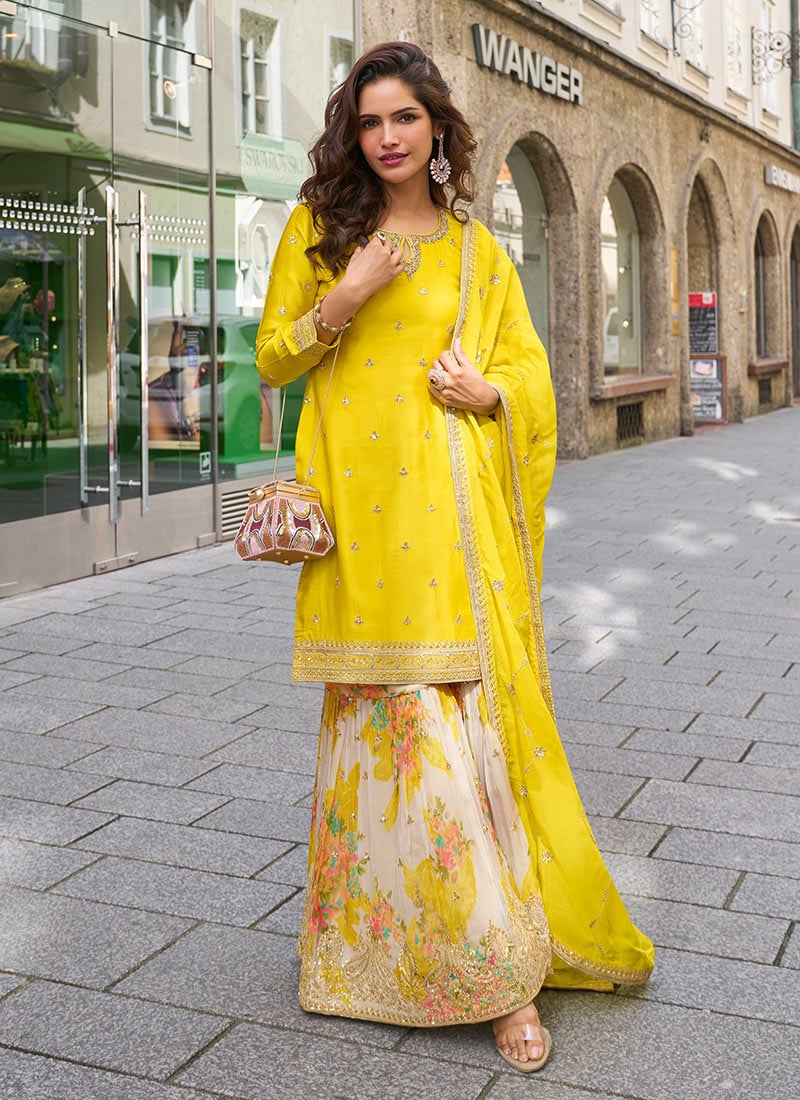
Wearing yellow is believed to invite joy and wisdom into life. Golden-hued sweets like ladoos or kesari are often prepared and offered to the goddess. Yellow flowers such as chrysanthemums or sunflowers also enhance the festive spirit while symbolizing positivity and devotion.
Day 6: Shashti Green – Growth, Harmony, and Freshness
Green, the color of nature, harmony, and prosperity, adorns the sixth day of Navratri. Devotees honor Goddess Katyayani, a fierce warrior form of Durga, symbolizing courage and protection. 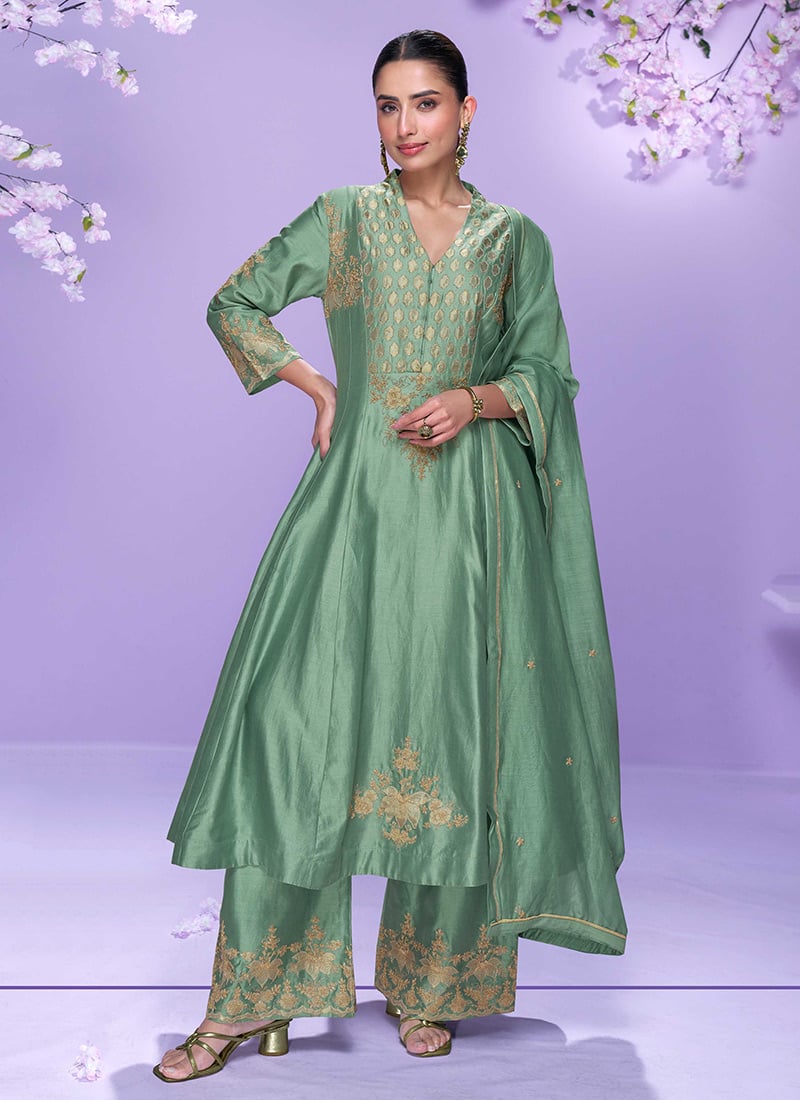
Wearing green reflects balance, growth, and renewal. On this day, people also pray for fertility, prosperity, and family well-being. Using green fabrics in your home décor or offering green fruits such as grapes and guavas brings vibrancy to the rituals.
Day 7: Saptami Grey – Balance and Transformation
The seventh day is symbolized by Grey, a subtle yet powerful color representing balance, neutrality, and transformation. Goddess Kalaratri, known for destroying ignorance and darkness, is worshipped on this day. 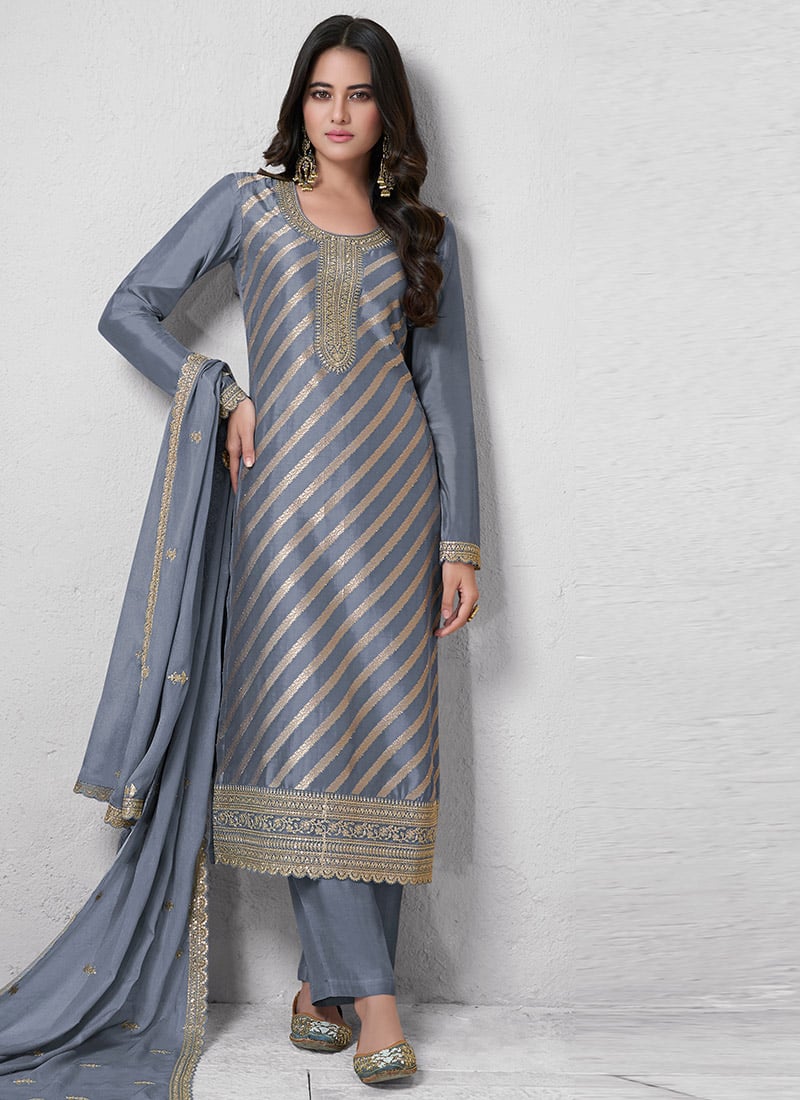
Grey reminds us that even in struggles and adversities, there is resilience and strength. Wearing grey not only honors the goddess but also conveys the ability to face challenges with composure. Lighting incense sticks or using metallic décor during rituals symbolizes the blending of strength with serenity.
Day 8: Ashtami Purple – Spiritual Awakening and Dignity
The penultimate day of Navratri is adorned with Purple, a color of dignity, royalty, and spiritual awakening. This day is dedicated to Goddess Mahagauri, who represents purity, compassion, and peace. 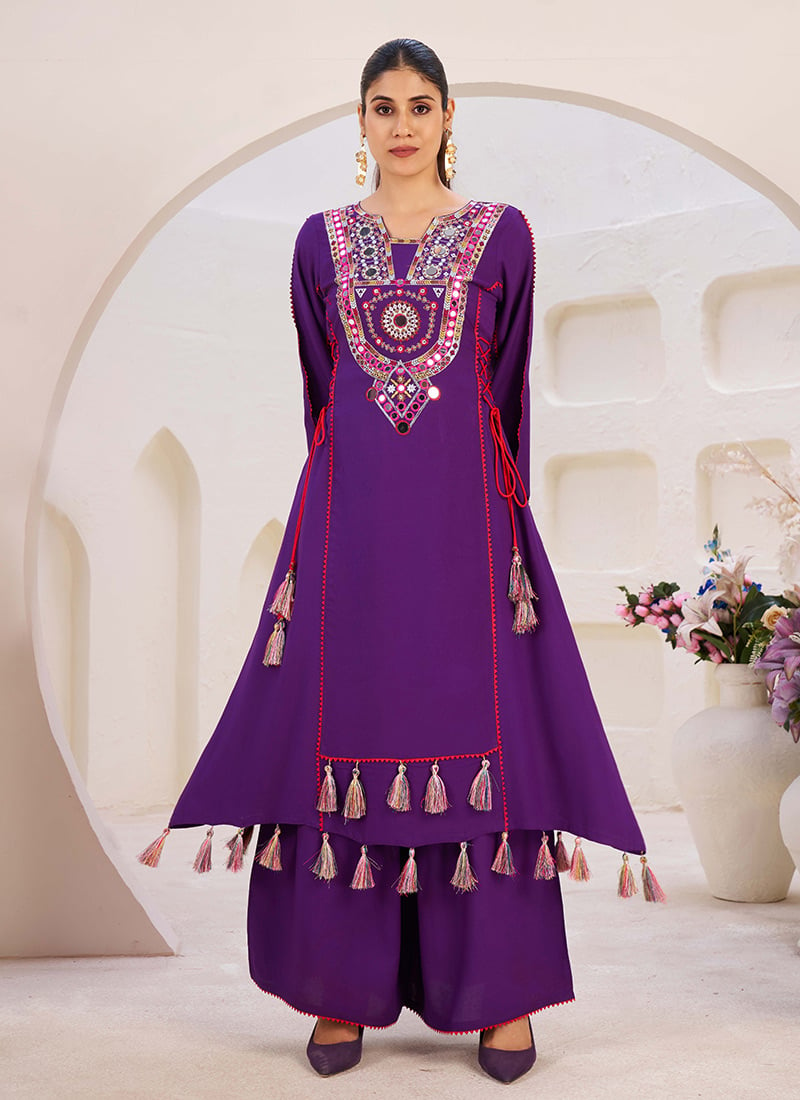
Wearing purple reflects devotion, faith, and spiritual awareness. It is a great day to meditate or chant mantras in deep devotion. Incorporating purple flowers such as orchids or violets in offerings enhances the atmosphere of reverence
Day 9: Navami Peacock Green – Uniqueness, Prosperity, and Grace
The ninth and final day is celebrated with Peacock Green, a shade that combines elegance, prosperity, and uniqueness. On this day, devotees worship Goddess Siddhidatri, who blesses her followers with wisdom, fulfillment, and divine powers. 
Wearing peacock green reflects gratitude and a deep spiritual connection. Offering sweets like peda or kheer, along with peacock feathers or decorative items in the same shade, marks the completion of this auspicious festival with grandeur.
How to Incorporate Navratri Colors
Navratri colors are not just about wearing the right shade—they can be creatively incorporated into various elements of attire. Here are some tips:
- Sarees and Lehengas: Choose traditional fabrics like silk, chiffon, or georgette in the designated color of the day. Embroidery or mirror work enhances festive appeal.
- Kurta and Pajama Sets: For men, pairing kurtas in the day’s color with contrasting pajama or churidar creates a stylish look.

- Accessories: Color-coordinated bangles, earrings, bindis, and dupattas complete the ensemble. Even subtle touches, like footwear or handbags, can reflect the Navratri color theme.
-
Mix and Match: Combining shades of the designated color with complementary colors can modernize traditional outfits while maintaining festive significance.
Conclusion
Navratri is not only a festival of devotion but also a celebration of colors, fashion, and energy. Each day’s color carries deep symbolic meaning, influencing positivity, strength, and harmony. Planning your Navratri 2025 wardrobe according to the nine-color tradition allows you to honor the goddess while enjoying the aesthetic beauty of the festival. Cbazaar provides a wide range of vibrant and stylish outfits for each day of Navratri, ensuring that you look your best while staying true to tradition. With these nine colors, your Navratri celebrations will be filled with joy, devotion, and unforgettable style.
Whether you are participating in garba, dandiya, or family rituals, coordinating your attire with the day’s color can enhance the festive spirit and create lasting memories. Celebrate Navratri 2025 in style, with Cbazaar’s exclusive collection of nine-color outfits, and make this festival a truly colorful and divine experience.
Navratri Colors FAQs
- Can I wear Western outfits in Navratri colors, or is it necessary to wear traditional Indian wear?
Yes, you can definitely wear Western outfits in Navratri colors. The key is to follow the color theme for each day, whether in dresses, tops, or accessories. While traditional Indian wear is popular, it’s not compulsory—expressing devotion and joy through colors matters more than the outfit style.
- What if I don't have clothes matching the color of the Navratri day?
If you don’t have clothes in the specific Navratri day’s color, don’t worry. You can still participate by wearing accessories, scarves, jewelry, or even nail polish in that shade. The true spirit of Navratri lies in devotion, joy, and togetherness—not just in perfect color coordination.
- Can I reuse my previous year’s Navratri outfits for 2025?
Yes, you can definitely reuse your previous year’s Navratri outfits in 2025. Styling them with fresh accessories, mixing colors, or adding trendy dupattas can make them look new. Sustainable fashion is always in style, and repeating outfits with a creative twist keeps tradition alive while saving money.
- Can I customize my lehenga, saree, or kurta in a specific Navratri color?
Yes, you can definitely customize your lehenga, saree, or kurta in a specific Navratri color. Each of the nine days has a special color symbolizing divine energy. Designers and boutiques offer tailored options, letting you choose fabrics, embroidery, and styles in your preferred Navratri shade for a festive, vibrant look.




Leave a Reply